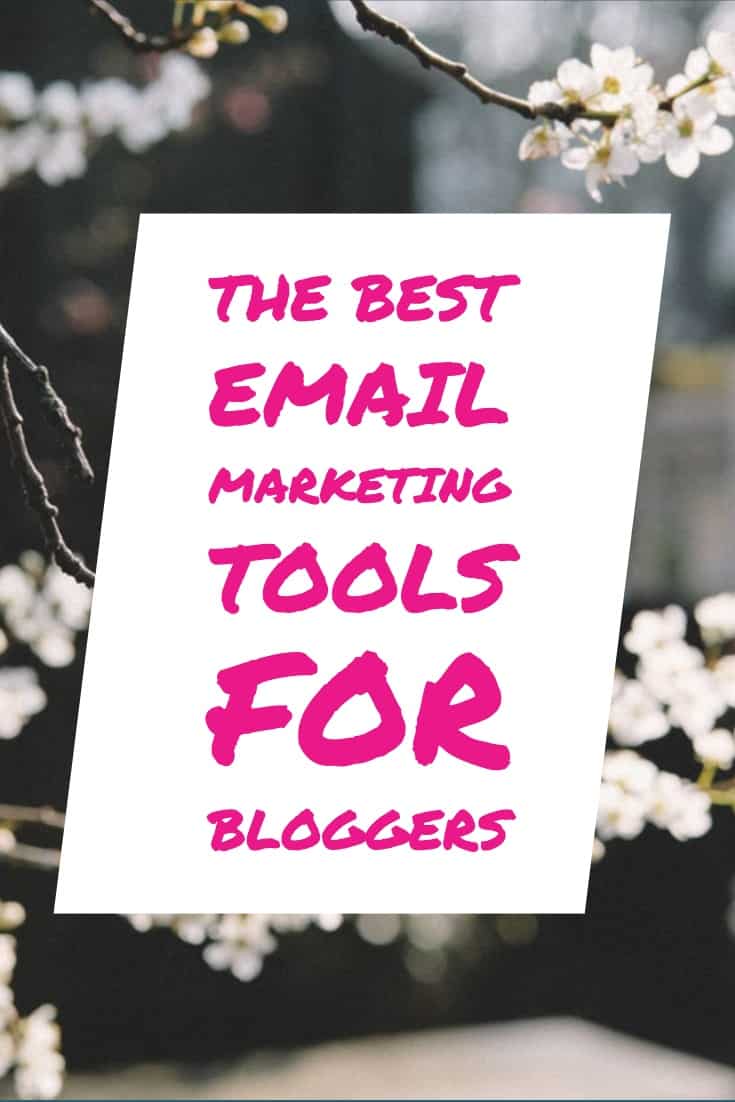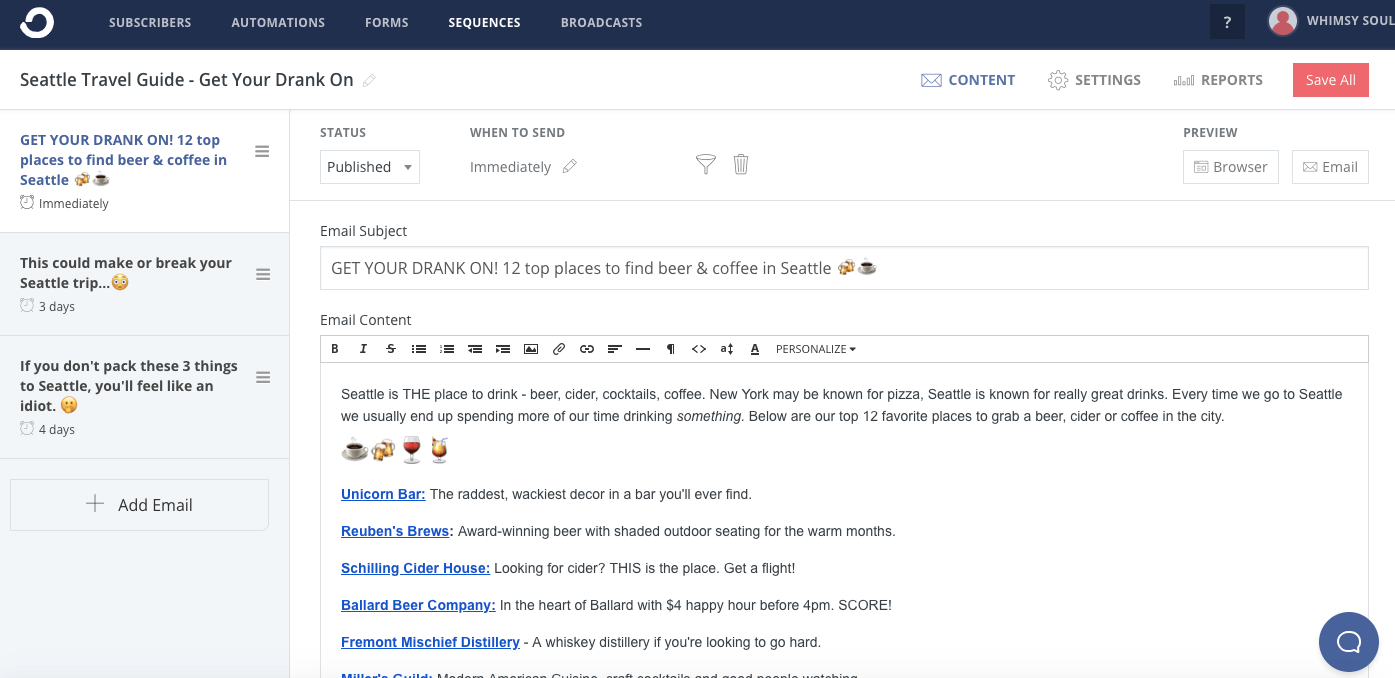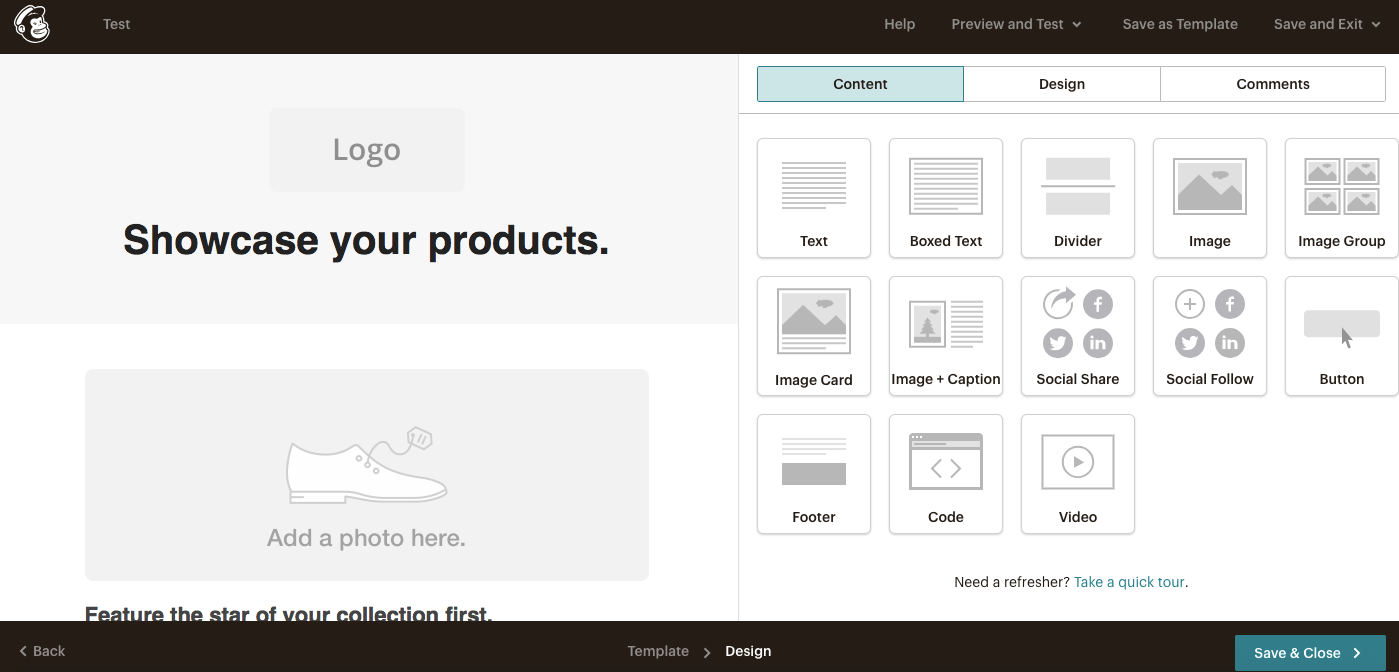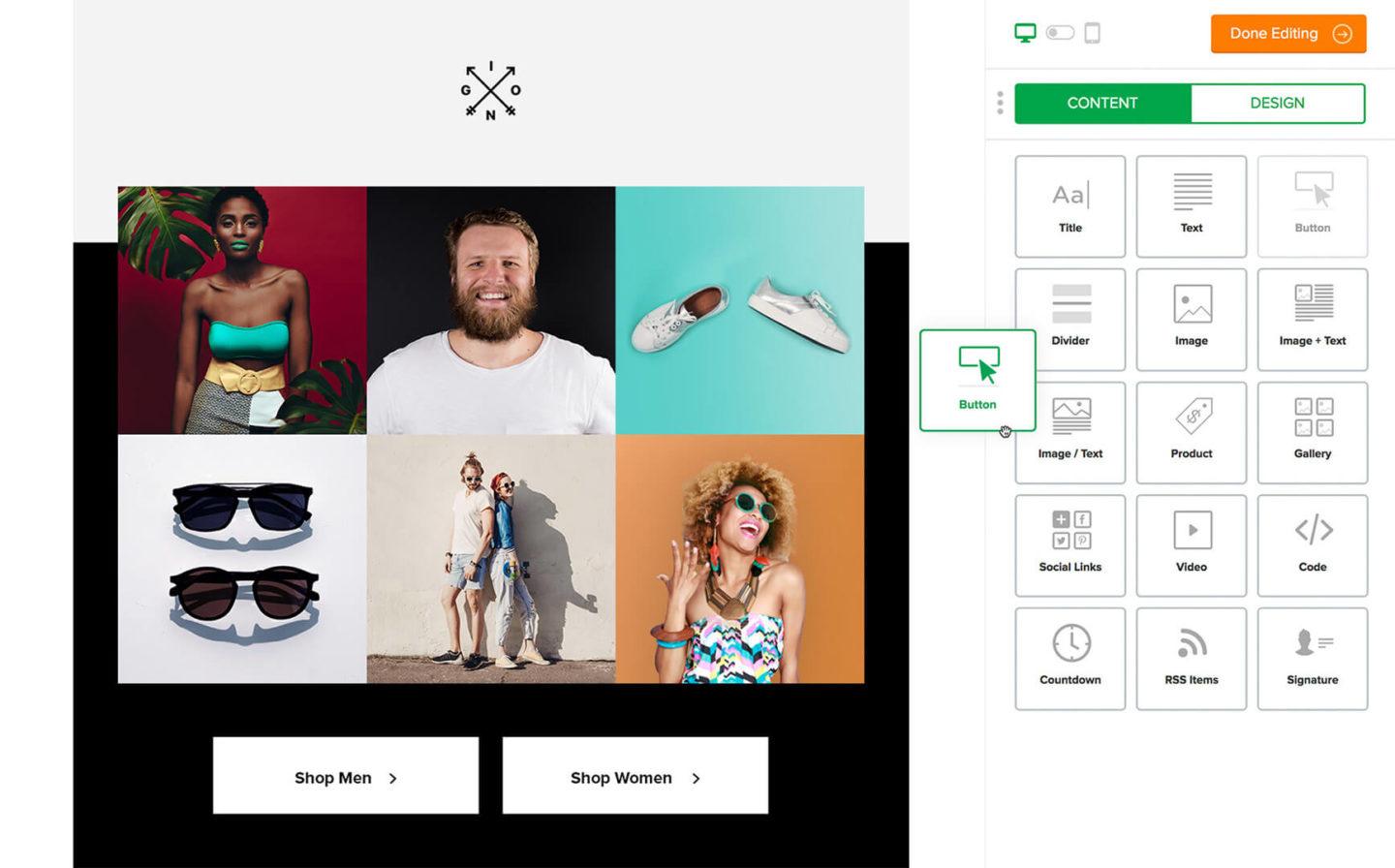If you are an influencer or a blogger, you probably have been told you need an email list. Not just an RSS feed, but a real traditional email newsletter blast, one that you construct and send out weekly (or monthly) to your subscribers. With a sea of email marketing tools and email marketing software these days, it’s hard to figure out which email marketing service will be the best one for you, a blogger. I tried out a bunch of different services for you and these are the best email marketing tools for bloggers to grow their email list, make more money and have a successful blog!
Pin this for later!


The Best Email Marketing Tools For Bloggers
First, let’s dig a little bit into just why you need an email newsletter when you have a blog. I think a lot of marketing professionals overlook the power of email in lieu of the popularity of social media. It’s not as sexy as Instagram, but when done right, email can be way more powerful and lucrative than any social network.
Why?
Because email is a personal invitation from a subscriber to knock on their digital front door. Social media with algorithms in place but an email newsletter is a direct line of communication between you and a dedicated reader. Add in all the segmenting and automation features, and you can quickly set up a system where readers get highly tailored emails that benefit them, and thus, help you drive more traffic, make more sales and build more trust. But, in order to do that, you need to make sure you pick the right email newsletter tool for your blog. Below are my top three email marketing tools for bloggers along with the pros and cons of each so you can decide which is right for you!
Other posts you may like
A free media kit template + tips for a killer media kit
How I earned 1.7 million monthly views on Pinterest
The top influencer networks to join to make money!
ConvertKit
Converkit is the email newsletter tool I use on my blog! Above is an example of what a form from Convertkit can look like. I used to use Mailchimp but switched to Converkit when I decided I wanted to be serious about my email marketing strategy. That’s because Convertkit is a top-of-the-line email marketing tools for bloggers. It’s a big confusing to figure out at first, but I love their highly-detailed segmenting, tagging and automation capabilities along with the option to create as many different forms as you want. This email marketing software is the bees-knees!
Unlike with Mailchimp where you can only have one form to drive subscribers to your list, you can make any number of forms on Convertkit. This means you can A/B test what call to action is working best or make blog-post specific email capture forms to drive more subscribers. (Check out my travel guide to Seattle to see how I used a highly specific Convertkit form in that post!)
- Detialed segmenting options
- Multiple form options from embedded forms to landing pages
- Easy tagging
- Drill-down automation flows
- Amazing customer service (like, so good!)
- Detail reporting
- It’s pricey
- Can be confusing to use at first
- Not as many design-y features
If you are ready to take your email newsletter to the next level, I wouldn’t use anything but Convertkit. Is it pricey? Yes. But good things don’t come free! Learn more here!
Mailchimp
Odds are, you have probably heard of Mailchimp before. (Remember the podcast Serial and their Mailchimp ads? I still call it Mailkimp sometimes as a joke in reference to those ads- ha!) Mailchimp is a wonderful email marketing tools for beginners. If you read that stuff about Convertkit and your eyes swam when I nerded out on segmenting and tagging, then Mailchimp is the best place to start your email newsletter journey.
This is because Mailchimp is free for lists under 2,000 subscribers and the form building tools is so easy, it’s hard to f-up. If you don’t have a good design eye, they make it really easy to build really beautiful emails.They are also easy to set up with tools like Shopify, so if you sell something, this is a great option. I used Mailchimp when I started out blogging for both of those reasons but I switched because I came to a point when I needed a more advanced way of capturing emails and segmenting my emails. You also are banned from using affiliate links in Mailchimp emails, which was a big priority for me as I want to build my passive income and email marketing is a great way to reach that goal.
If you only send out one email newsletter to your whole list and you don’t use affilates, then Mailchimp will always serve your needs. But if you want to start exploring segmenting (as in, sending different sorts of automation emails to different subscribers based on what form they signed up us, activity level or interests) Mailchimp just isn’t equipped to do that in an easy way.
- Free to sign up and use under 2k subscribers!
- Interface so easy to use, it’s dummy-proof.
- Easy to integrate into other tools like Shopify.
- No customer support for the free plan.
- Lack of easy-to-use- advanced features for segmenting and automation.
- You are banned from using affiliate marketing from Mailchimp, so you can’t monetize your emails!
To recap, if you are a beginner blogger or are just starting your email list, Mailchimp is a good option as it’s free to start and provides a great playground for you to feel out what you want to do with your email newsletters.
Mailerlite
Mailerlite is a newbie on the email marketing tools for bloggers scene that I’ve heard positive things about from blogger friends. It seems to be a mix between what Convertkit and Mailchimp offer. Mailerlite is an affordable email newsletter service and also offers a free plan for beginners. I poked around the platform and loved their easy drag-and-drop design tool for email newsletters. It’s a lot like Mailchimp where they make it really easy to build pretty emails without a lot of design skill!
But, it does fall a bit short on things like tagging, hidden rules and some automation features that Convertkit has. It is also possible for the system to completely halt your account if your open rate or click-through-ratee is deemed too low. So, if you are just starting out and playing around with what works and what doesn’t, if you fail at first, your whole account may be shut down. That could be an issue. Lastly, you need a custom domain email (like hello@myblogname.com) in order to use the service and many new bloggers still use a Gmail address.
- Free to sign up and use under 1k subscribers!
- Affordable email marketing service (paid accounts start at $10/mo)
- Easy to use interface.
- Good customer support.
- You can’t sign up for an account with a Gmail address.
- You could get banned if your open rate is too low.
- Lacks some advanced tagging/rules that Convertkit offers.
- Tricky to get approved for an account.
If you are just starting out, Mailerlite could be another really good option to use. Or, if you want some more advanced funnel tools that Mailchimp doesn’t offer but aren’t ready to pay the price of Convertkit, then Mailerlite is probably the best email marketing tool for blog. If you are on the fence between Mailerlite and Mailchimp, I honestly recommend signing up for both because they are free and playing around with the internal systems of both to see which you like better!
To recap, If you are looking for the best email marketing tool for bloggers, I really do believe Convertkit is the best email newsletter tool for any blog. I stand by it and so do many of my peers! Convertkit is the best email marketing tool for highly segmented funnels and automation, meaning you can use it to monetize your email list with ease. But, if you are just starting out and aren’t ready to take the dive into the world of email marketing or are just looking to send out one simple weekly email newsletter, Mailerlite or Mailchimp is a good place to start. There are so many marketing tools you can use as a blogger and a good email marketing solution is a must for blogs!
Have questions? Leave a comment below or DM me on Instagram @thewhimsysoul and I’ll try to help answer them for you!







3 comments
When researching the best email marketing tools for bloggers, it’s important to consider how additional technology can improve your overall effectiveness. Hardware management software can play a critical role in maintaining the health of the devices bloggers use to create content and communicate. By ensuring that all equipment is working optimally, bloggers can focus on creating and distributing high-quality emails without technical glitches, which ultimately increases the effectiveness of their marketing efforts.
Great tools for bloggers! These options are perfect for bloggers looking to enhance their reach and engage their audience effectively.
Great roundup! It’s helpful to see the pros and cons laid out clearly—thanks for sharing these insights!